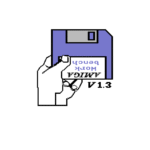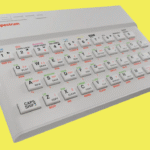Countless devices are currently available for playing classic games from the 80s, 90s, and even 2000s. So why would you rely on a Raspberry Pi do to the job for you?
You might use an original home computer or console for your retro gaming fix. Or you might prefer something official or licensed, like the Nintendo Classic Mini or The C64. But both of these devices, and others, cost around the same as a budget laptop.
Meanwhile, you can buy a Raspberry Pi for under £30 (Raspberry Pi Zero W Starter Kit) and have all the power you need to emulate either system. Feeling more ambitious? The Raspberry Pi 4 is a little more expensive but has all the power you need to emulate PS1 games.
The solution seems obvious… but there is a trade-off.
DIY Retro Gaming vs Emulation Systems
Modern, compact retro gaming emulation systems for the SEGA Megadrive and various Atari retro consoles have been released. If you’re a fan of these platforms, buying the re-released versions is far simpler than installing the emulators on a Raspberry Pi.
If you’re keen on the idea of a DIY setup, the Raspberry Pi may not even be the best single board computer (SBC) for the job. A popular alternative is the ODroid, a Pi-like board that has higher system specs. Just like the Raspberry Pi, it runs Linux, and installing the same emulation systems is just as simple. But you’ve got better processing, and more RAM, which means a greater collection of games is at your disposal, from more platforms.
On the downside, an ODroid costs more than a Raspberry Pi.
Then again, you could just use a desktop computer. Capable of running emulators for almost any platform, a desktop (or laptop) running Windows, macOS, or your Linux distribution of choice is the ultimate catch-all solution to retro gaming. Your current computer is probably ideal.
Even your Android smartphone or tablet can be used for portable retro gaming.
Why Rely on the Raspberry Pi for Retro Emulation?
Well, it’s simple. Not only is the Pi massively affordable, it is easy to set up, and has a very low power requirement. Such is the popularity for retro gaming on the Raspberry Pi that several retro gaming systems have been released, such as the Retroflag GPi. Here’s me assembling one:
The Raspberry Pi is hugely versatile — much like a desktop computer, but a lot lighter — and can emulate a vast collection of gaming platforms.
All you need is something like RetroPie, Lakka, or Pi Entertainment System.
By making it so easy to add and remove emulators and game ROMs, these retro gaming systems — available as disk images, so no complicated installation is necessary — have helped to revolutionise how we play old video games. There’s no need to spend money on eBay to get hold of some much-needed classic hardware; you don’t have to worry about damaged capacitors, cracked system boards or other common failings in older hardware.
Instead, put your faith in the credit card sized computer, and look forward to a future of compact (perhaps portable!) retro video gaming, thanks to the Raspberry Pi!
Affiliate Disclosure: Some of the links in this post may be affiliate links, which means I may earn a small commission if you make a purchase through those links. This comes at no extra cost to you. Thank you for your support!
Christian Cawley is the founder and editor of GamingRetro.co.uk, a website dedicated to classic and retro gaming. With over 20 years of experience writing for technology and gaming publications, he brings considerable expertise and a lifelong passion for interactive entertainment, particularly games from the 8-bit and 16-bit eras.
Christian has written for leading outlets including TechRadar, Computer Weekly, Linux Format, and MakeUseOf, where he also served as Deputy Editor.
When he’s not exploring vintage consoles or retro PCs, Christian enjoys building with LEGO, playing cigar box guitar, and experimenting in the kitchen.









